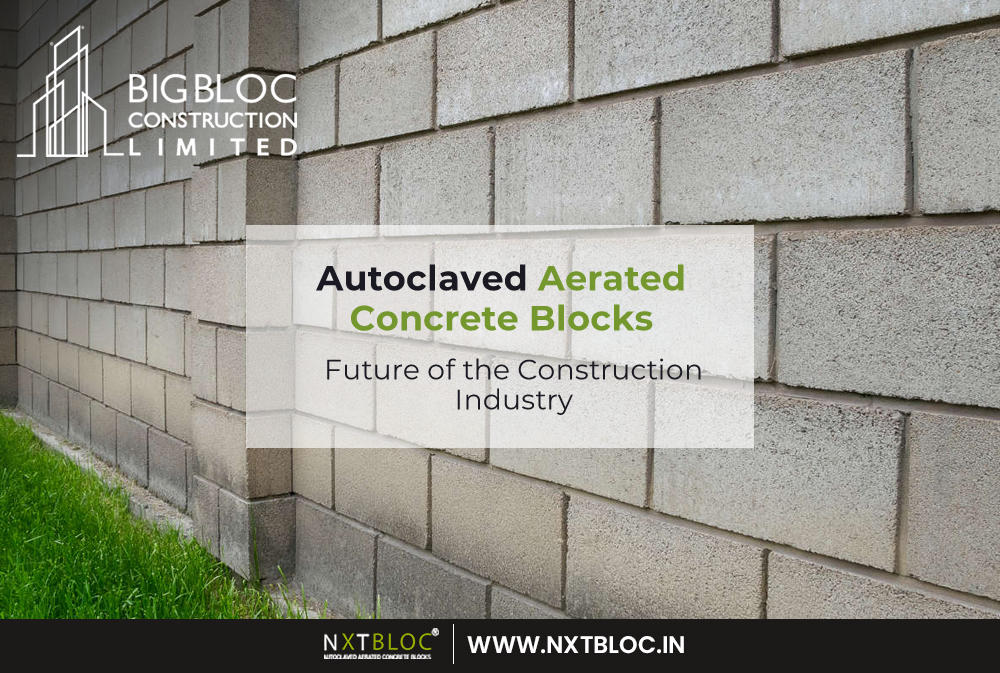Autoclaved Aerated Concrete, or AAC, is a revolutionary building material that is quickly gaining popularity in the construction industry. The innovative material has been around in one form or another for almost 100 years, but only recently has it captured mainstream attention. The autoclaving process gives this new building material its unique porous structure; hence, it’s considered to be an efficient and environmentally-friendly building material.
In this article, we explore the benefits of Autoclaved Aerated Concrete blocks, including their wide range of applications. We also take a look at how AAC blocks are contributing to the future of building and sustainable construction.

Autoclaved Aerated Concrete (AAC) has become increasingly utilized in the construction industry in recent years. This revolutionary material is composed of cement, lime, and fine aggregates, and is hardened in an autoclave, which is a pressurized steam chamber. The autoclaving process creates the AAC’s porous form, rendering it both energy-efficient and eco-friendly.
AAC has proven to be incredibly advantageous due to its low weight, which is approximately one-fifth that of standard concrete.
- This attribute makes it easier to handle and install, making it a great material for residential and commercial constructions, particularly for multi-level constructions that may otherwise be burdened by the heavy weight of concrete.
The superior insulating capacity of AAC is one of its main advantages.
- Its porous nature captures air, which allows it to maintain comfortable temperatures inside buildings, providing significant energy savings.
- Moreover, Autoclaved Aerated Concrete Blocks (AAC) also provide an extra layer of security against fire, keeping both structures and occupants safe.

AAC is a multi-purpose material ideal for a multitude of construction tasks.
- It can be used for wall and roof assemblies, partitioning, and soundproofing, as well as for fire protection.
- What makes AAC stand out is its versatility in the design and renovation process; it is easy to work with, can be modified to suit specific designs, and can be cut, drilled, and formed to exact measurements.
AAC is an eco-friendly building material due to its sustainable manufacturing process and carbon-neutral nature.
- It takes less energy to produce compared to traditional concrete, rendering it an ideal choice for green construction projects.
AAC, otherwise known as Autoclaved Aerated Concrete, is rapidly revolutionizing the construction industry due to its immense advantages.
- Its low weight, insulating characteristics, fire resistance and eco-friendliness all make it a desirable option for energy-saving and sustainable building projects.
- Of course, if Autoclaved Aerated Concrete Blocks are not properly maintained and installed, there may be some potential drawbacks.
- Nonetheless, its innovative properties have cemented its reputation as a revolutionary construction material for the future.

Conclusion
Utilizing AAC leads to lighter construction, allowing for a significant reduction in steel and concrete consumption. Additionally, AAC cladding panels can serve to accentuate the existing architecture of any steel or wood-frame building. Their fire-resistant and thermal-insulating characteristics provide a safe and comfortable living environment.
At NXTBLOC, we prioritize delivering the construction industry with Autoclaved Aerated Concrete (AAC) products of the utmost quality, manufactured with cutting-edge technology and ecologically sound manufacturing practices. Our purpose is to be a dependable associate to our customers through remarkable customer service, technical assistance, and economically-viable options. With our mission to drive sustainable construction and energy-efficient architecture forward, we pledge to remain a pioneer in the AAC industry on a global scale.
